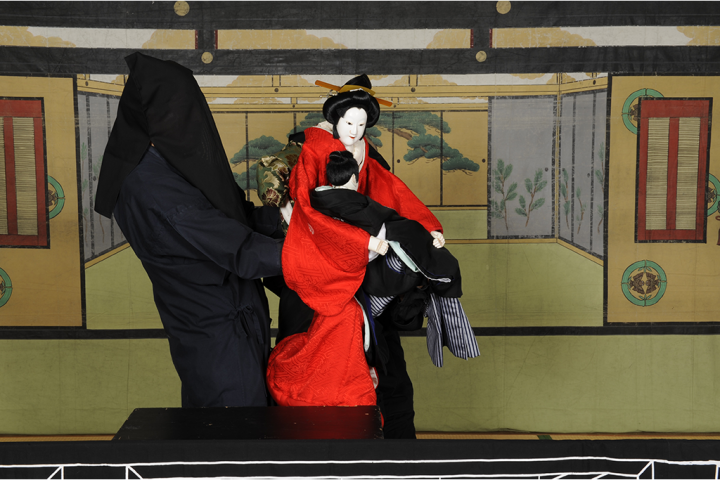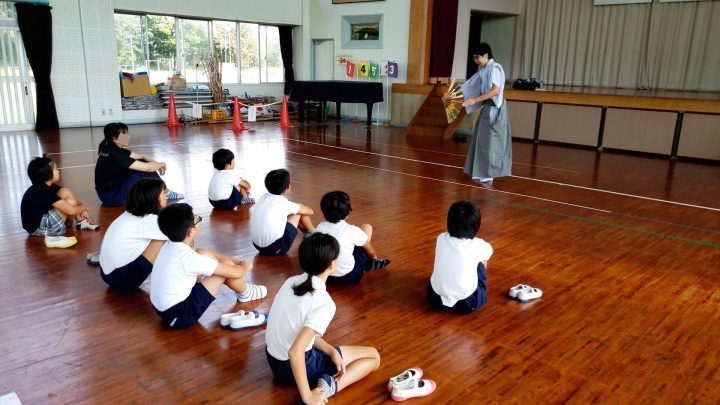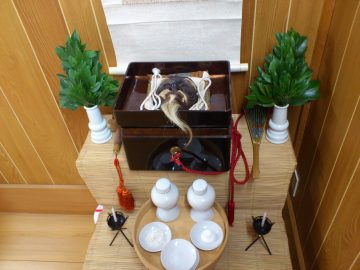"Kanagawari Classic 2016 in Odawara" to be held on September 19th (National Holiday)
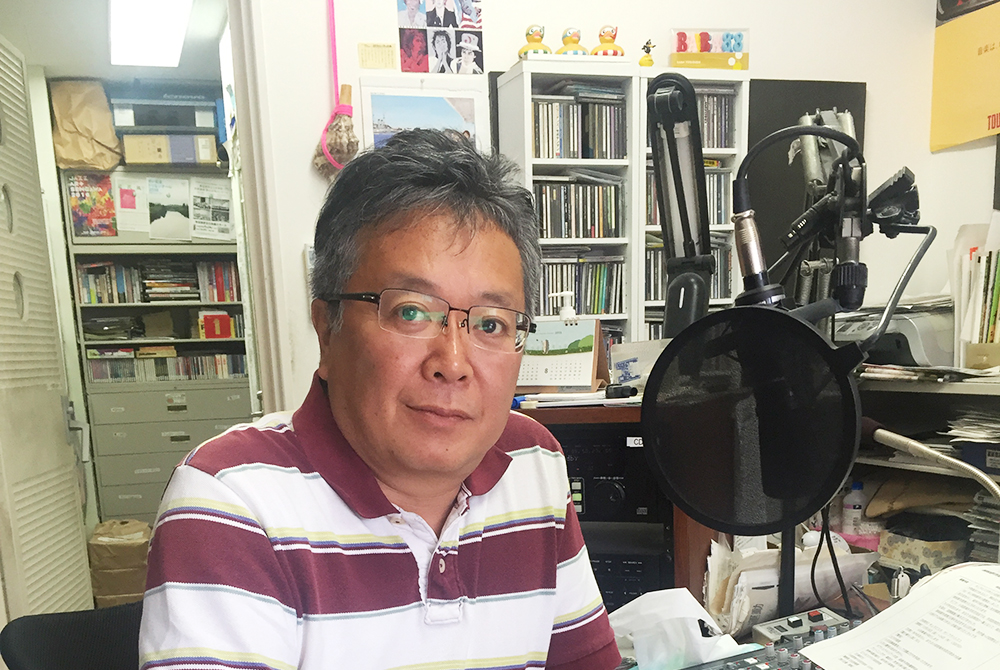
<Event summary>
"Kanagawa Ri Classics 2016 in Odawara"
Date : September 19, 2016 (holiday)
Part 1 Doors open at 12:30/Start at 13:00
・Entertainment of the Gion Festival at Enshu Iida Yamana Shrine (Nationally designated Important Intangible Cultural Property)
・Rakugo by Sanza Yanagiya
・Odawara Bayashi (Odawara City, Prefectural Intangible Folk Cultural Property)
・Kashima Dance of Terayama Shrine (Odawara City, Prefectural Intangible Folk Cultural Property)
・Hakone Yutateshishimai (Hakone Town, Nationally Selected and Prefecturally Designated Intangible Folk Cultural Property)
・Uirouri sales pitch research group
Part 2: Doors open 18:00 / Performance starts 18:30 / Scheduled to end at 21:00
・FOOD with Arzhan Suu by Koichi Makigami
・Hosho School Takigi Noh: Noh "Yachi Soga" and Kyogen "Bunzo"
Venue : Odawara Castle Park Honmaru Square Special Stage
6-1, Jonai, Odawara City, Kanagawa Prefecture
*In the event of bad weather, the event will be held at Odawara Civic Hall.
Price : First session free
Part 2 Advance tickets 3,000 yen / Same-day tickets 3,500 yen (Limited to 1,000 seats, all unreserved seats)
*For advance ticket sales locations, please see here ( http://re-coten2016.com/?page_id=5 ).
Delivering authentic traditional performing arts leads to the revival of classics
--FM Odawara is preparing for this year's "Re-Classic" project. Please tell us how it came about.
Suzuki : FM Odawara is a community FM radio station that started 10 years ago. Radio stations collect a variety of local information. In order to disseminate this information in a wide range of ways, not just through radio, in recent years we have also begun to take on local event planning. We also launched the Odawara Citrus Club to promote the local area, selling local cider and Odawara mandarin flower honey. Having worked to develop the town and revitalize the area through these activities, we were entrusted with this year's "Re-Classic" project.
-- "Re-Classic" is a project to promote the traditional culture of Kanagawa Prefecture in a new form. How do you, Suzuki-san, view "Re-Classic"?
Suzuki : I've been thinking about what "Re" (=rebirth) means. I think there are various ways of expression, such as collaborating traditional arts with modern dance, but I wonder if that will really take root. After thinking about it, I thought that performing real traditional arts in the present day and showing them to young people is itself a form of rebirth. So in this "Re-Classic," I want to dig up traditional culture and show it in its original form without over-staging it.
--However, there is also a sense of newness to it.
Suzuki : We are also promoting collaborations, with DJ Robert Harris acting as the general host and musician Koichi Makiage performing. But I think performing Takigi Noh at Odawara Castle itself is a "ri". Takigi Noh was actually held at Odawara Castle until 2009, but it has been suspended since then... There were many voices calling for its revival, so we decided to try again.
However, at the time, the school was called the Kanze school, but this year we asked the Hosho school to perform it. After researching old documents with the people at the Odawara City Cultural Properties Division, we found out that the Hosho school had connections with the Hojo clan. So we thought we should ask the Hosho school to perform "Yauchi Soga," which has a connection to Odawara.
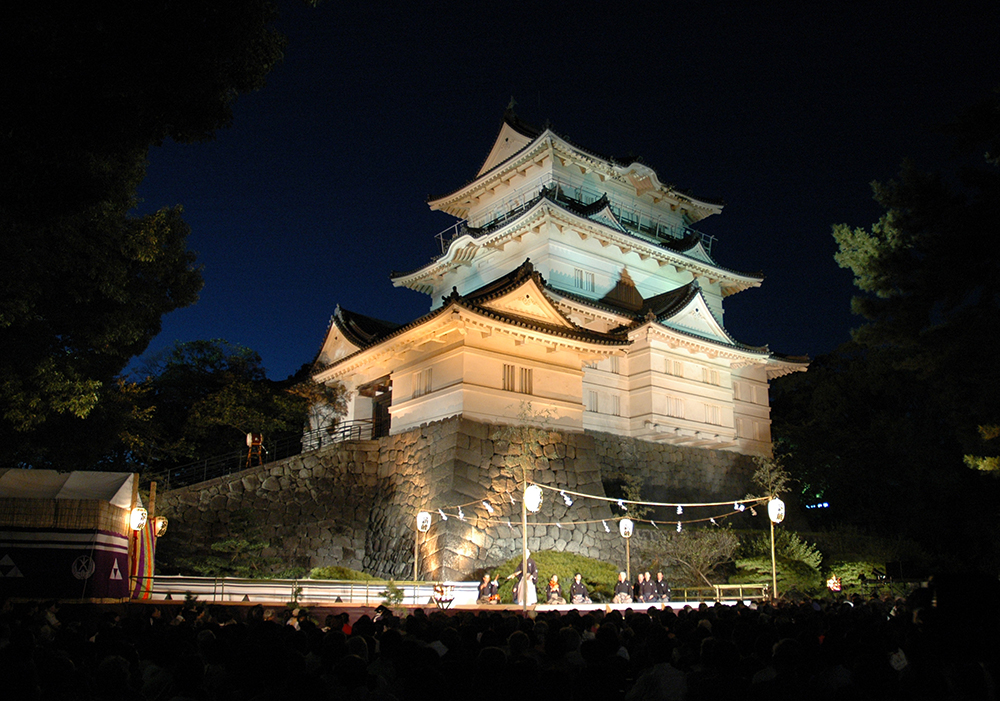 Takigi Noh performance held in 2004 (Courtesy of Odawara Digital Archive)
Takigi Noh performance held in 2004 (Courtesy of Odawara Digital Archive)--What kind of play is the Kyogen play "Bunzo"?
Suzuki : It's a play related to the Battle of Ishibashiyama from the Genpei Seisuiki. In Odawara, there is Ishibashiyama, where Minamoto no Yoritomo raised his army, and there remains Sanada Shrine, which enshrines Sanada Yoshitada, who led the vanguard in this battle and was killed in battle, and Bunzado, which enshrines his retainers. In fact, I was born in Ishibashi, too. We started chatting about the Bunzado, and decided to dig up a play related to Odawara.
--It's truly a community-based business.
Suzuki : Many of the performers have ties to Odawara. I was originally a member of the Noh Club at Odawara High School. After graduating, I became a band member and then worked as a music producer. But 10 years ago, I thought, "If I'm going to change jobs, now is the time," and decided to come back to Odawara. I reached out to a lot of people through my connections from my time at Odawara High School and as a music producer.
--For example, what kind of person is he?
Suzuki : Koichi Makiage, who I am working with on the production, is also a senior at Odawara High School. Sanzo Yanagiya, the rakugo performer who will be appearing in the first part of the show, is also a graduate of Odawara High School. Robert Harris, the show's general host, is also from Yokohama.
--It's also surprising that Hikashu's Makiage Koichi will be appearing.
Suzuki : They will not be directly involved in Takigi Noh, but will perform on the Noh stage. They are planning to play the shakuhachi and theremin on stage. There is a traditional Odawara cast iron craft called Odawara wind chimes, and they will also incorporate them into the performance. In addition, FOOD (an avant-garde jazz unit consisting of British saxophonist Ian Ballamy and Norwegian drummer Thomas Stronen) will also be performing. It will be very unusual for them to perform on the Noh stage, and it will be interesting.
The circle of traditional culture expands from "Re-Classic"
--Now, let's talk about the program for the first part. Admission is free, but there will be a lot of performances, such as the rakugo by Sanza Yanagiya, the entertainment from the Gion Festival of the Enshu Iida Yamana Shrine, and Odawara Bayashi.
Suzuki : We will also be performing the Kashima Dance of Terayama Shrine, the Yutateshishimai of Hakone, and the Uirouri sales pitch. These traditional performing arts are often performed in halls, so the general public rarely has a chance to see them. Now that Odawara Castle has been renovated and the number of tourists has increased, a performance at the castle park will surely attract many people. And admission is free. Some people will come to see Yanagiya Sanza, so we thought we could use Sanza as an excuse to get them to watch traditional performing arts (laughs). And then Robert Harris will make fun of them (laughs).
--The Enshu Iida Yamana Shrine Gion Festival is a performing art from Shizuoka Prefecture. Why did you add it to your repertoire?
Suzuki : Actually, this company also has a connection to Odawara. In Odawara, there is a 650-year-old company called "Uiro Co., Ltd.", which was founded by the Uiro family. Uiro is what we would call a pharmacy today. They came from China in the 1300s, and settled in Hakata before moving to Kyoto. At the Gion Festival, there is a float with a praying mantis on it called "Toroyama," and it was the Uiro family that made it. Apparently their base was near Honnoji Temple, and there is a popular myth that Oda Nobunaga became Uiro... (laughs).
Later, the Uiro family was invited by Hojo Soun to move to Odawara, but it is said that they may have also brought the mantis dance to Enshu, which is located between Odawara and Kyoto. The dance is still dedicated to the Gion Festival at Yamana Shrine, but it has never been performed in Odawara. So I thought I would take this opportunity to ask for a favor.
--The location of Odawara Castle Ruins Park is also attractive.
Suzuki : After the renovation, we started holding events here. On weekends, about 4,000 people visit, so it's a very lively place. We even had a wedding ceremony in front of Odawara Castle.
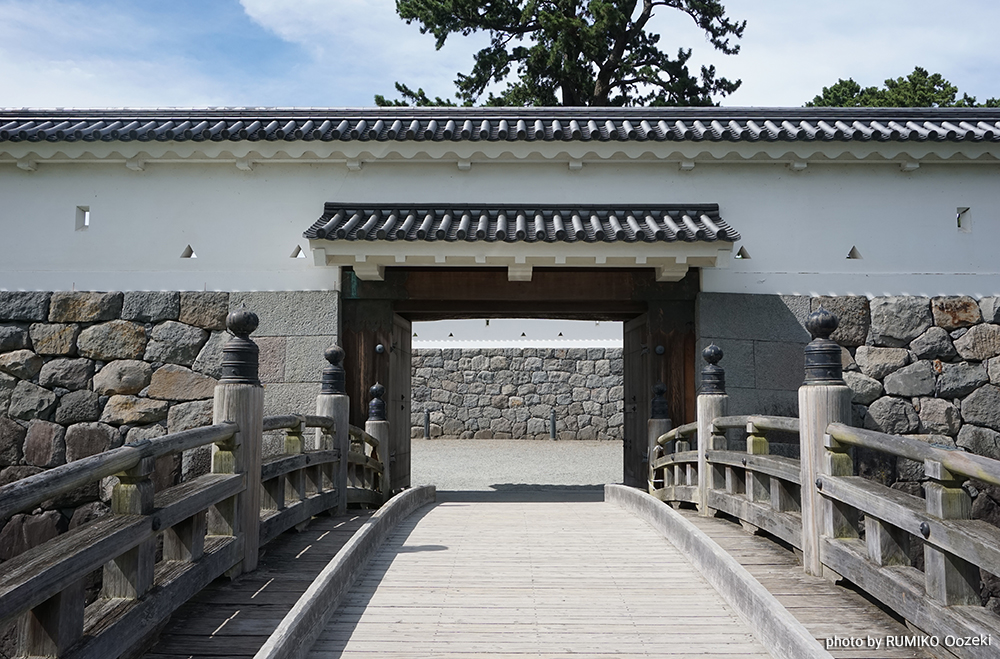
--Mr. Suzuki, did you make any new discoveries by being involved in this "Re-Classics" project?
Suzuki : It was a continuous series of discoveries. To begin with, this project was the trigger for me to learn about the Kyogen play "Bunzo." I also felt the difficulty of knowing what to focus on when looking at history. Toyotomi Hideyoshi attacked Odawara Castle and destroyed the Hojo clan. So the only thing remaining from the Hojo era is the Uiro clan. What's more, the Odawara Castle that Hideyoshi attacked was not in its current location, but a mountain castle near Odawara High School. We weren't taught that when we were kids (laughs). I felt that by tracing history, many things become clear.
--What kind of collaborative system have you established with the prefecture?
Suzuki : The Kashima Dance of Terayama Shrine remains not only in Odawara but also in Shizuoka. In the future, I would like to cooperate with the prefecture to connect the traditional culture that has been scattered. I would like to think about how to bring the prefecture's intangible folk cultural assets to the public as a joint project with the prefecture.
--It seems likely that this project will lead to further expansion.
Suzuki : There was a strong demand for the revival of Takigi Noh, so we would like to continue it next year and beyond. To begin with, there are hardly any events that are unique to this area in Odawara, which is a bit sad. We would like to take this opportunity to enliven Odawara.
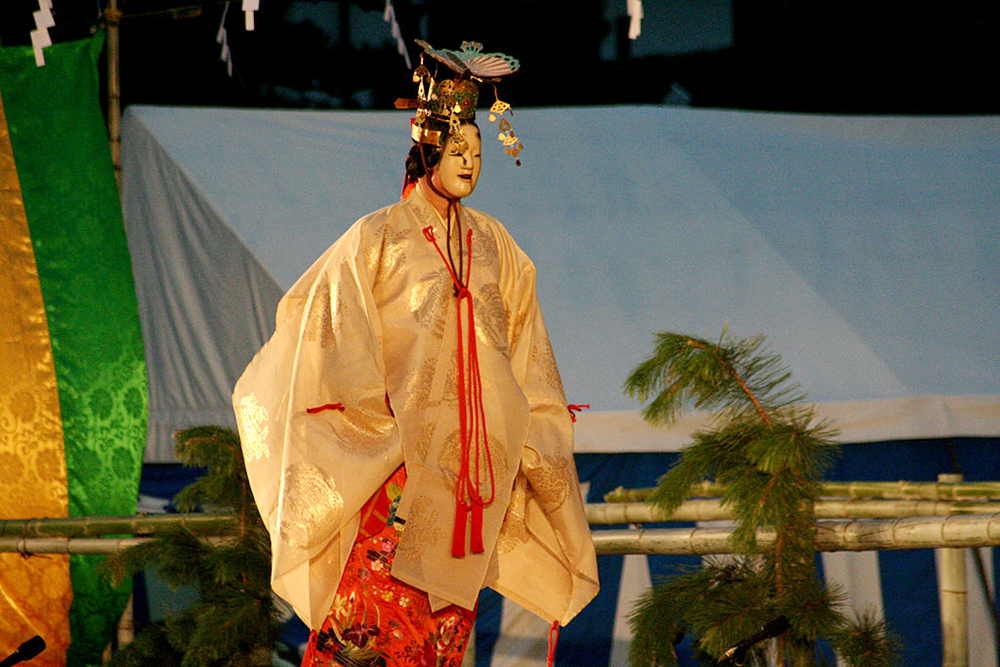 Himeji Takigi Noh in 2009 (c) Corpse Reviver
Himeji Takigi Noh in 2009 (c) Corpse ReviverIn addition, these events also lead to regional revitalization. The renovation of Odawara Castle's main tower was featured on many TV programs, and if tourists visit the area, we can expect an economic effect. Even if we go beyond the framework of "Re-classics," we would like to continue holding events that can attract people from far away.
-Finally, please give us some promotion for "Kanagawari Classics 2016 in Odawara," which is coming up on September 19th (national holiday).
Suzuki : I would love for young people to come. If it weren't for this opportunity, it would be difficult to see Takigi Noh. What's more, you'll get to see the performance of the world-famous Koichi Makiage. I hope everyone will come and experience the real thing.
– – –
Kanagawa Re Classic Project 2016 Odawara: http://re-coten2016.com/
FM Odawara: http://fm-odawara.com/
